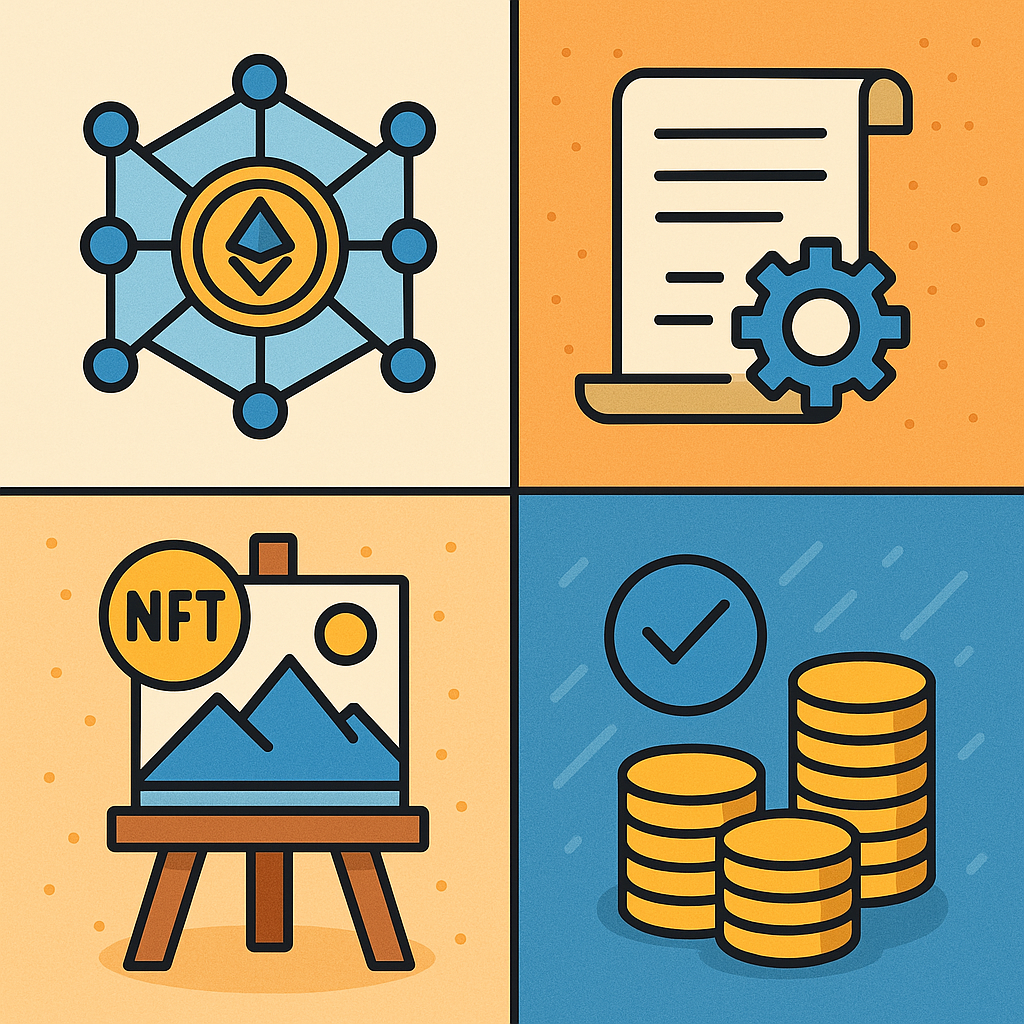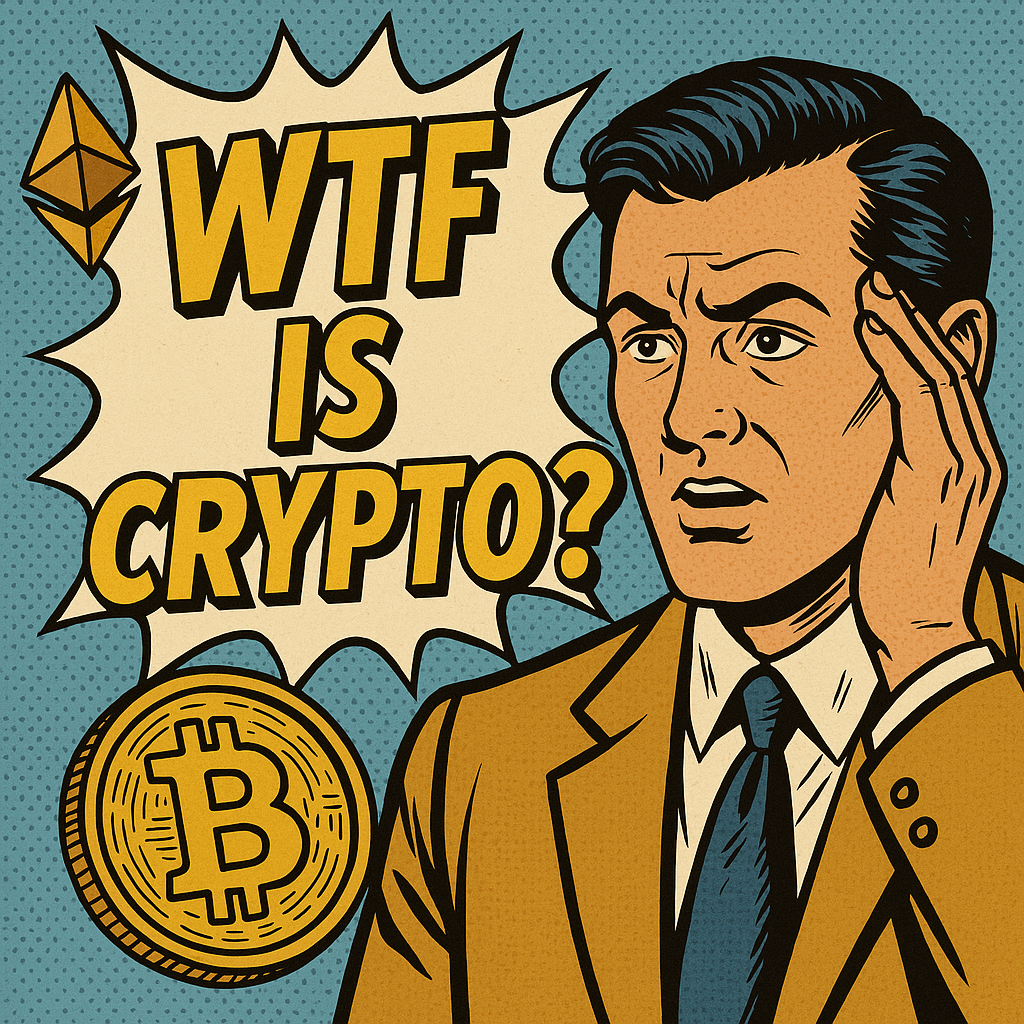Welcome back. If Part 1 made sense, these next terms will help connect the dots and open up more of the crypto world:
Decentralized Finance (DeFi)
DeFi is like financial services—loans, interest, trading—without a bank. It’s all run on code, on the blockchain. You stay in control of your funds and use apps (called DApps) to do stuff that used to require a middleman.
Smart Contract
Code that runs by itself when certain conditions are met. No paperwork, no middleman. Think of it like: If X happens, then do Y. They’re a big part of why Ethereum is so popular.
Staking
Some blockchains (like Ethereum now) let you “stake” coins—basically, lock them up to help keep the network running. In return, you earn rewards over time. It’s kind of like earning interest, but the mechanics are different.
NFT (Non-Fungible Token)
Unique digital assets. Could be art, music, a ticket to an event, or even a piece of virtual real estate. Unlike Bitcoin or Ethereum, you can’t just trade one NFT for another—they’re all different.
Gas Fees
These are transaction fees you pay on blockchains like Ethereum. The more traffic on the network, the higher the gas fee. It’s what keeps the network running and pays validators or miners.
And that wraps up Part 2.
You now have the basics to explore deeper, ask better questions, and understand the core building blocks of crypto. No need to rush—follow your curiosity and build from here.



